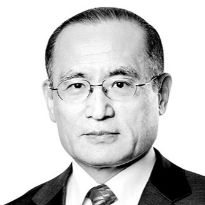A bipartisan approach is key

The author is a former South Korean representative to the six-party talks and head of the diplomacy and security division of the JoongAng Ilbo’s Reset Korea campaign.
The controversy over President Yoon Suk-yeol’s non-summit with Japanese Prime Minister Fumio Kishida in New York last week on the sidelines of the UN General Assembly originates with the wartime forced labor issue. Japan adhered to the position that the prime minister will not have a summit unless Korea presents a solution first. Both countries had exchanged tense tits-for-tats until Tokyo took its hard stance. While the Moon Jae-in administration took a domestic law-based approach to settle the case by seeking to implement a Supreme Court ruling for compensation for the forced labor after refusing to submit the case to an arbitration committee — as agreed to in the 1965 Treaty on Basic Relations between Korea and Japan — based on its respect for the separation of powers and victims, Japan held to an international law-based approach by refusing to accept the top court’s ruling for the liquidation of Japanese companies’ assets in Korea. Tokyo said the dispute was already settled through the treaty 57 years ago. Japan eventually decided to not hold a summit with Korea.
The Yoon administration wants to improve relations with Japan. It seems that it wanted to resolve the issue by shunning the past administration’s domestic law-focused approach and having a summit with Kishida.
The drastically different approaches between Seoul and Tokyo, coupled with the confusion over the announcement of a summit between Yoon and Kishida in advance, made matters worse. On Korea’s part, it could blame Japan for its rigid attitude toward a meeting between the two leaders. But more important is how to cut through the Gordian knot.
The Yoon administration has been trying to find realistic solutions, including the establishment of a joint civilian-government committee and meetings with survivors of the forced labor. The government seems to believe that the next step is presenting its solution — something akin to payment by subrogation.
And yet, questions remain. First, the government fell short of canvassing public opinion. Given the fundamental clash between the top court’s ruling and the treaty — and Tokyo’s strong demand for compliance with the international agreement — it is not easy to address the conflict if Seoul cannot present a flexible solution. However, as such a solution reflects the government’s submissive position, it can arouse public disgruntlement in Korea. That’s why the Yoon administration must create a mechanism to effectively canvass a broad spectrum of public opinion.
In this respect, the government took the right direction by pushing for the establishment of a joint civilian-government committee. But the committee’s role had limits. The committee only serves as a venue for discussion instead of taking the initiative, as seen in the departure of survivors from the committee one after another. They feared the possibility of the Yoon administration pushing for a preordained solution.
Second, concerns are deepening over the low approval ratings for the government and intense confrontation between the People Power Party (PPP) and the Democratic Party (DP). The DP is in a combative mode after its politicians became targets of investigation.
If the government unilaterally pushes a certain solution, the victims, the DP and the liberal forces will most likely oppose it. If the approval ratings for the government decline further, it could lose momentum for the solution. Even if the government puts the solution into action, it can be reversed in case the DP wins the next presidential election. The party actually reversed the decision of the past conservative administration to set up a foundation to resolve the wartime sex slave issue.
I would propose some additions to the government’s approach. First, it can consider the idea of setting up a bipartisan consultative body consisting of political and social bigwigs to find solutions. That can effectively canvas public views and reduce the level of controversy. The government can consider the idea of inviting a former National Assembly speaker from the DP to the bipartisan body.
Second, a rush to settle the dispute could end up with a solution with legal loopholes. If that happens, the victims’ group can sue again. If a court sides with the victims’ group, it can trigger chaos. Even if finding a solution is difficult, the government must seek an iron-clad solution.
Some may wonder if the government could get support from the DP despite their intense enmity. But my proposal for a bipartisan solution will certainly be better than a unilateral solution. It is time for the rival parties to demonstrates a sense of cooperation for the nation. It’s all up to the Yoon administration.
The controversy over the Yoon-Kishida summit left a bitter taste. The time has come for the government to focus on what to do from now on. I hope the government finds a sustainable solution by canvasing public opinion in a bipartisan manner.










with the Korea JoongAng Daily
To write comments, please log in to one of the accounts.
Standards Board Policy (0/250자)